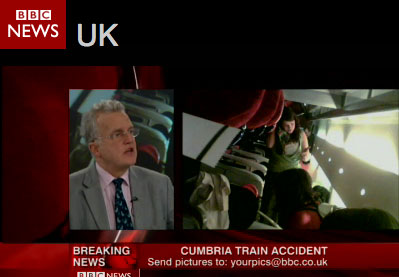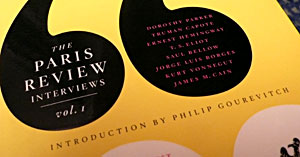My colleague Michael Dales has found the very first iPod ad. Quaint.
This sent me looking for the famous 1984 Macintosh commercial — and Lo! — here it is:
Sometimes, YouTube is just wonderful.

My colleague Michael Dales has found the very first iPod ad. Quaint.
This sent me looking for the famous 1984 Macintosh commercial — and Lo! — here it is:
Sometimes, YouTube is just wonderful.
I’ve been listening to an intriguing talk in the invaluable IT Conversations series. It’s given by Karen Stephenson, an academic and consultant who has created a way of doing social network analysis in organisations. The nub of her approach is summarised in this pdf. Basically, she seems to look for several kinds of network in any organisational culture she studies:
Having worked in a large organisation for a long time, and been a consultant in many others, this analysis makes a lot of sense.
Stephenson has a company which does social network analysis using an explicit methodology and some proprietary software for analysing social interactions (it probably includes monitoring and mapping email conversations). She’s also published a book, The Quantum Theory of Trust.
Hooray! IOgear have released their USB2 external video card. Inside it is a Nivo which is a descendant of the technology we use in Ndiyo systems. Quentin has a picture and thinks the retail price is $83.
Bill Thompson makes an insightful comment about Yahoo Pipes.
This isn’t user-generated content, it’s user-controlled content. And unlike personalised pages or simple feed subscriptions it really does put control into the hands of the user.

This is a screen-grab from BBC coverage of tonight’s West Coast rail accident. From very early on the BBC was giving details of how to send pictures via mobile email and SMS. The photograph in the right-hand frame is from a passenger on the train.
Later… James Cridland has some interesting thoughts about this. He points out the irony that the photographer in this case was the BBC’s Chief Operating Officer, who happened to be on the train! So technically this is power-user-generated-content!

This, believe it or not, is a two-dimensional pavement drawing. Julian Beever specialises in astonishing anamorphic illusions drawn in a special distortion in order to create an impression of three dimensions when seen from one particular viewpoint. Lots more examples (many equally hard to believe) on his site.
Leading-edge Uselessness Department. Playing Xbox Live over Google WiFi While Driving.

I’m reading a lovely book — Vol. 1 of The Paris Review Interviews. What’s lovely about it isn’t just the content (though some of the interviews are terrific), but also the feel of the volume: it’s a softback printed on matt paper with uncut edges — just like the Gallimard books of my adolescence.

It’s amazing how much tactile pleasure a nicely-made book gives. This one is, as the saying goes, hard to put down. Don Norman is right: attractive things work better.
“There’s a hell of a distance between wisecracking and wit. Wit has truth in it; wisecracking is simply calisthenics with words”.
Dorothy Parker, The Paris Review Interview.
One of the funnier aspects of digital photography is listening to retail sales personnel explaining megapixels to customers. Basically the line seems to be that the more megapixels you have, the better. How come then that my Nikon D70, with its 6.1 megapixel sensor, produces consistently better images than my Leica D-Lux 3 compact, which boasts 10 megapixels?
The answer, crudely, boils down to two factors: a larger sensor and better lenses. When I was talking about this with a colleague, Dave Phillips (also a D70 user), he pointed me to this useful tutorial by Sean T. McHugh, whose site also includes some terrific photographs of Cambridge.